Perhaps the most uncommon shape for residential floor plans is the curve. Many factors make this an unusual way to build a house — namely expense, complexity, and having enough land to execute such a shape. But regardless of the difficulty in building something with curves instead of all straight lines, a number of such houses can be found on Houzz. Unlike linear and U-shaped plans, these examples illustrate a wide variety of reasons for their shapes. I'm guessing the residents are as idiosyncratic as the houses they inhabit.

This residence on a prominent site overlooking the Pacific Ocean is horseshoe-shape in plan. Curving on the inside and outside faces, the house looks in both directions: in to a courtyard and out to the ocean. Next, take a look inside.
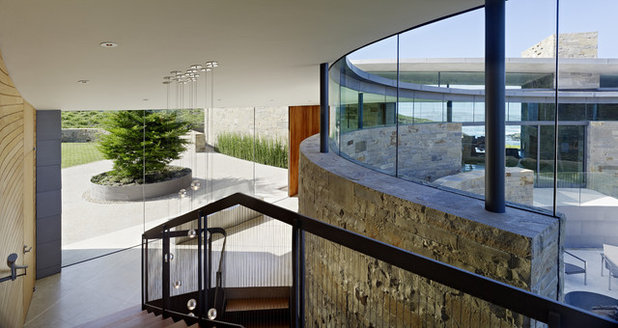
At the entrance, the inside of the house is open to the forecourt, but it closes off a view of the courtyard. One must follow the curve to have this central cradled space revealed to them.
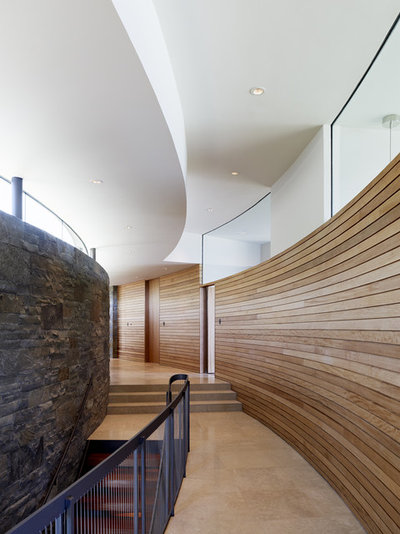
Still in the horseshoe house, we can see how the circulation gently follows the curve. I like how different materials are used for either side: Rough stone delineates the inside curve, while bands of wood sit opposite. The clerestory windows hint at the courtyard to the left and the other rooms borrowing light to the right.

At one end of the horseshoe is a living space open on both sides. This space overlooks both the courtyard and the ocean.
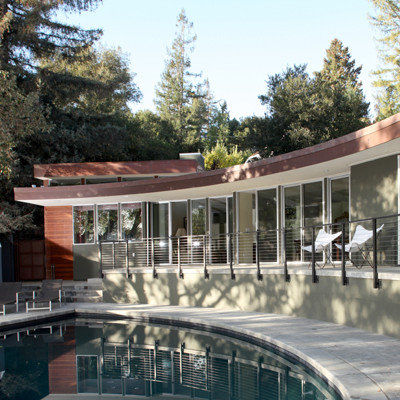
Mark English Architects, AIA
A more compact curving house is found here, where the focus is clearly on the pool. A generous terrace overlooks the pool, which is also curved in plan. Next, see another view.
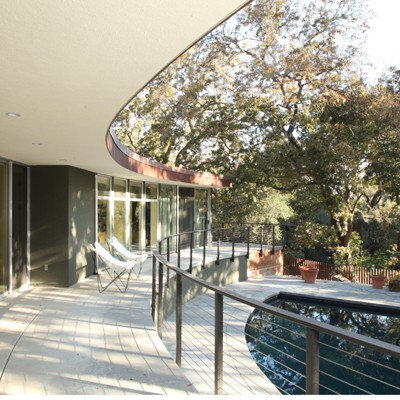
Mark English Architects, AIA
Even if many of the materials are made up of straight or planar pieces — wood planks, glass panes, mullions, railings, etc. — the constructed radius of the roof allows this side of the house to be read as curving. This line is prominent outside and inside, as we'll see next.

Mark English Architects, AIA
The line of the curving roof outside extends inside and is capped by clerestory windows, a nice means of connecting interior and exterior. Note the elliptical glow in the distance ...
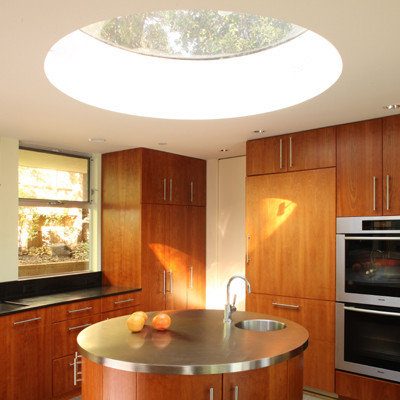
Mark English Architects, AIA
That glow comes from a circular oculus over the round kitchen sink. So even in an orthogonal corner of the house, the curving motif is picked up, a reminder of the curve by the pool.
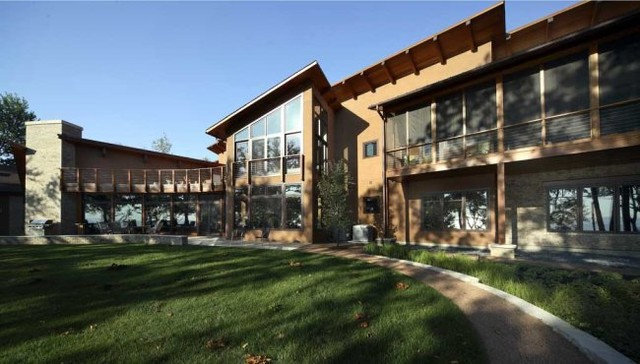
Becker Architects Limited
Similar to the previous example, this house has railings following a curve. But in this case they are found on a second-floor roof terrace. Get a closer view, next.
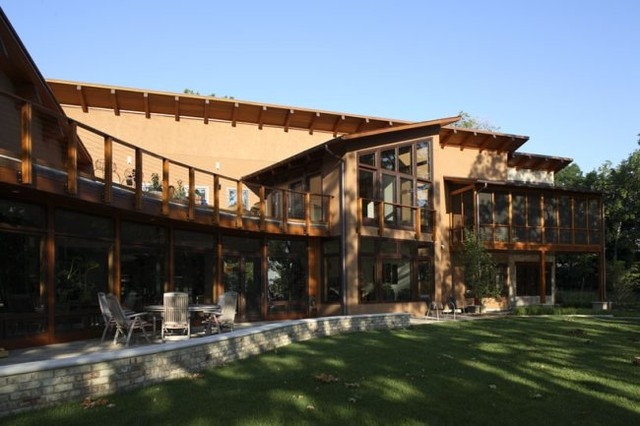
Becker Architects Limited
Here we see the curving portion in the foreground, but it's apparent the house is an L-shaped plan with the curve filling in the corner of the "L." This creates that roof terrace and also brings the rooms towards the lake that the house overlooks.

CAST architecture
No, this is not a curve, but note how the kink of this plan relates to the curves of the previous two houses. By bending a house, it creates a sense of enclosure and focus; in many cases it helps relate to the site, both immediate and distant.
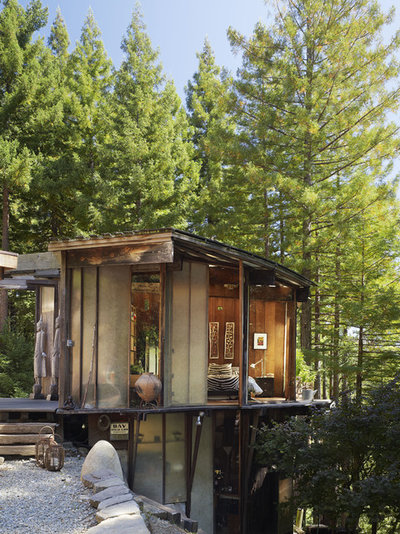
DWYER DESIGN
This last example, the aptly named Radius House, dates back to 1960 and is directly influenced by Frank Lloyd Wright's curvilinear houses. The curve is used to give maximum exposure to the trees around the house. Next, let's take a look inside.
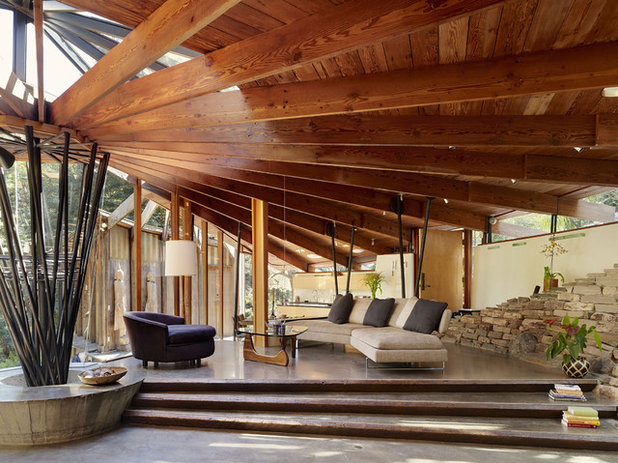
DWYER DESIGN
While the exterior looks out through glass walls to the trees, the interior is focused on a structural column. The wood beams radiating from this spot make the shape of the house clear, as well as one's position within the plan.





